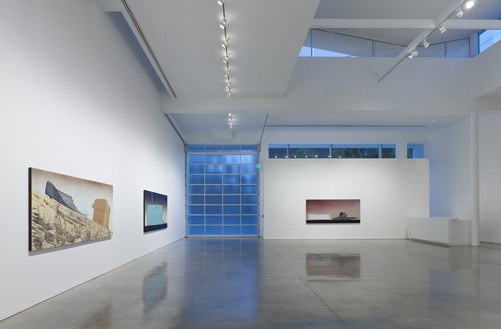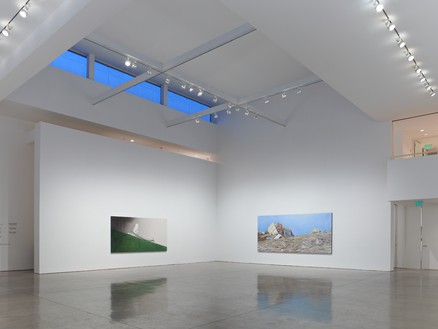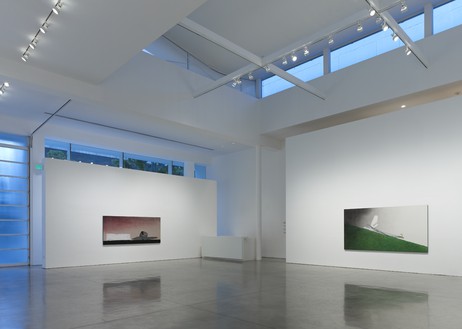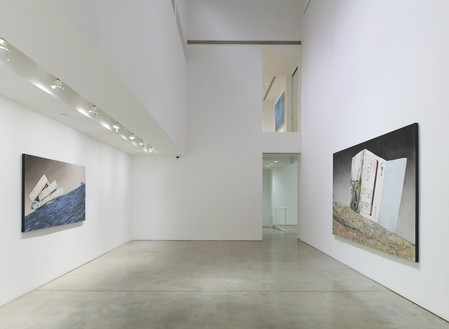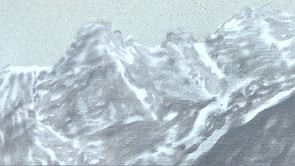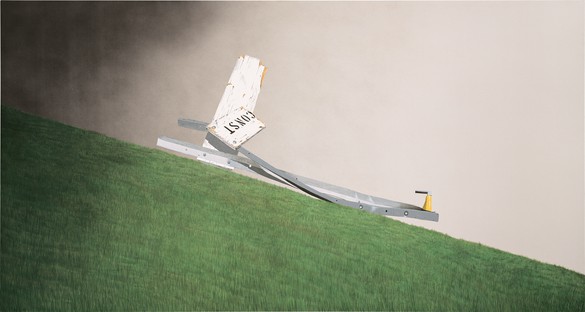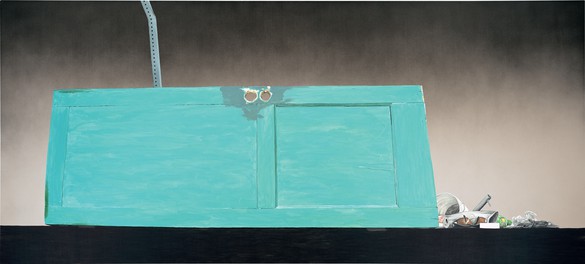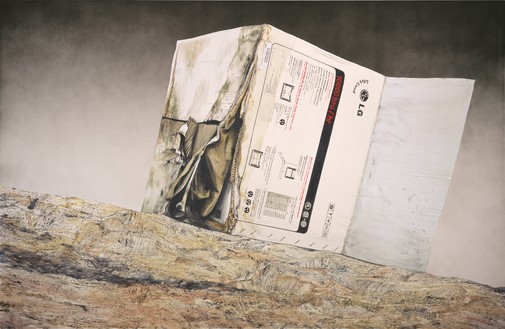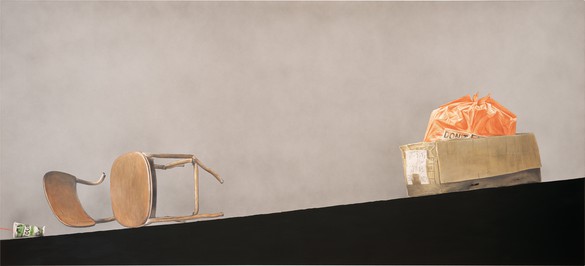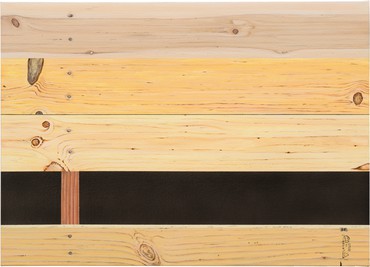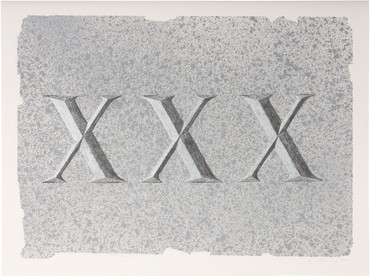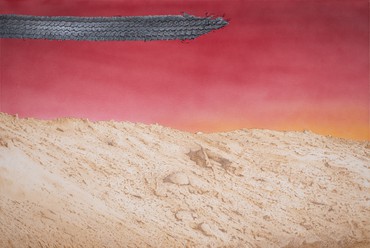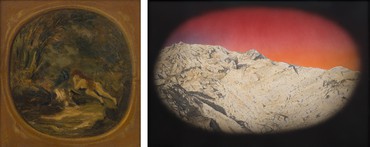About
Deterioration is a fertile area to explore.
—Ed Ruscha
Gagosian is pleased to present ten new paintings by Ed Ruscha, in his first painting exhibition in Los Angeles in twelve years.
Psycho Spaghetti Westerns are a surreal extension of the ideas that motivated the Course of Empire series, with which Ruscha represented the United States at the 2005 Biennale di Venezia. Course of Empire was inspired by five paintings by Thomas Cole of the Hudson River School, which depict the same landscape over time as it declines from a pristine natural state into desolation. Similarly, Ruscha has documented the effects of time on landscape in a manner that is both empirical and metaphorically charged, creating finely nuanced exercises in perception and memory that he describes as “waste and retrieval.”
In these wide horizontal paintings, landscape becomes a mental construct of abutting abstract surfaces—one a sfumato backdrop, the other a representational ground (grass, scrub, rock). This structure—a strong diagonal that cuts the picture plane, dividing background from foreground—is a pictorial device that Ruscha has often used, dating back as far as the Standard Station paintings of the 1960s. Here it provides a near-neutral picture plane for meticulously rendered still lifes in which incidental trash—tire shreds, beer cans, construction materials, packaging, and discarded mattresses—provide for reflection on the transformation of things by nature or culture.
Ruscha’s singular vision defies easy categorization. He has recorded the shifting emblems of American life in the form of Hollywood logos, stylized gas stations, and archetypal landscapes. His wry choice of words and indirect phrases mines the perpetual interplay between language as a physical thing and language as a transparent medium. Although his images are undeniably rooted in the vernacular of a closely observed American reality, his elegantly laconic art speaks to more complex and widespread issues regarding the appearance, feel, and function of the world and our tenuous and transient place within it.
Share

Flags
Gillian Pistell writes on the loaded symbol of the American flag in the work of postwar and contemporary artists.

Donald Marron
Jacoba Urist profiles the legendary collector.
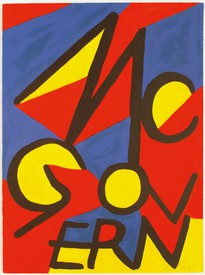
The Art History of Presidential Campaign Posters
Against the backdrop of the 2020 US presidential election, historian Hal Wert takes us through the artistic and political evolution of American campaign posters, from their origin in 1844 to the present. In an interview with Quarterly editor Gillian Jakab, Wert highlights an array of landmark posters and the artists who made them.
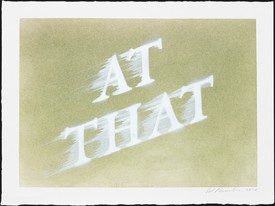
“Things Fall Apart”: Ed Ruscha’s Swiped Words
Lisa Turvey examines the range of effects conveyed by the blurred phrases in recent drawings by the artist, detailing the ways these words in motion evoke the experience of the current moment.

Artists’ Magazines
Gwen Allen recounts her discovery of cutting-edge artists’ magazines from the 1960s and 1970s and explores the roots and implications of these singular publications.
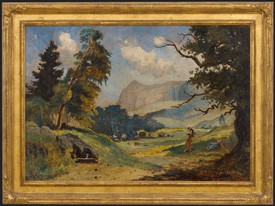
Eilshemius and Me: An Interview with Ed Ruscha
Ed Ruscha tells Viet-Nu Nguyen and Leta Grzan how he first encountered Louis Michel Eilshemius’s paintings, which of the artist’s aesthetic innovations captured his imagination, and how his own work relates to and differs from that of this “Neglected Marvel.”
News
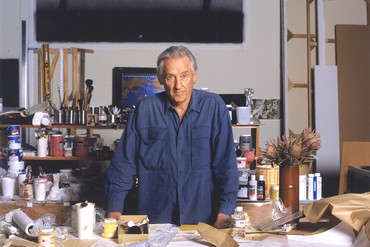
Artist Spotlight
Ed Ruscha
September 16–22, 2020
At the start of his artistic career, Ed Ruscha called himself an “abstract artist . . . who deals with subject matter.” Abandoning academic connotations that came to be associated with Abstract Expressionism, he looked instead to tropes of advertising and brought words—as form, symbol, and material—to the forefront of painting. Working in diverse media with humor and wit, he oscillates between sign and substance, locating the sublime in landscapes both natural and artificial. Ruscha’s formal experimentations and clever use of the American vernacular have evolved in form and meaning as technology alters the essence of human communication.
Photo: Kate Simon

galleryplatform.la
Ed Ruscha
Drum Skins
May 28–June 30, 2020
Gagosian is pleased to present recent paintings by Ed Ruscha online for galleryplatform.la. Fifty years ago, Ruscha purchased a set of vellum drum skins from a leather shop in Los Angeles. He has continued to collect these vintage objects, and since 2011 he has used them as canvases for the works on view in his solo exhibition Drum Skins at the Blanton Museum of Art at the University of Texas at Austin.
Installation view, Ed Ruscha: Drum Skins, Blanton Museum of Art, University of Texas at Austin, January 11–October 4, 2020. Artwork © Ed Ruscha
